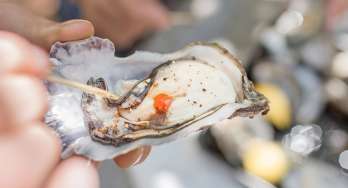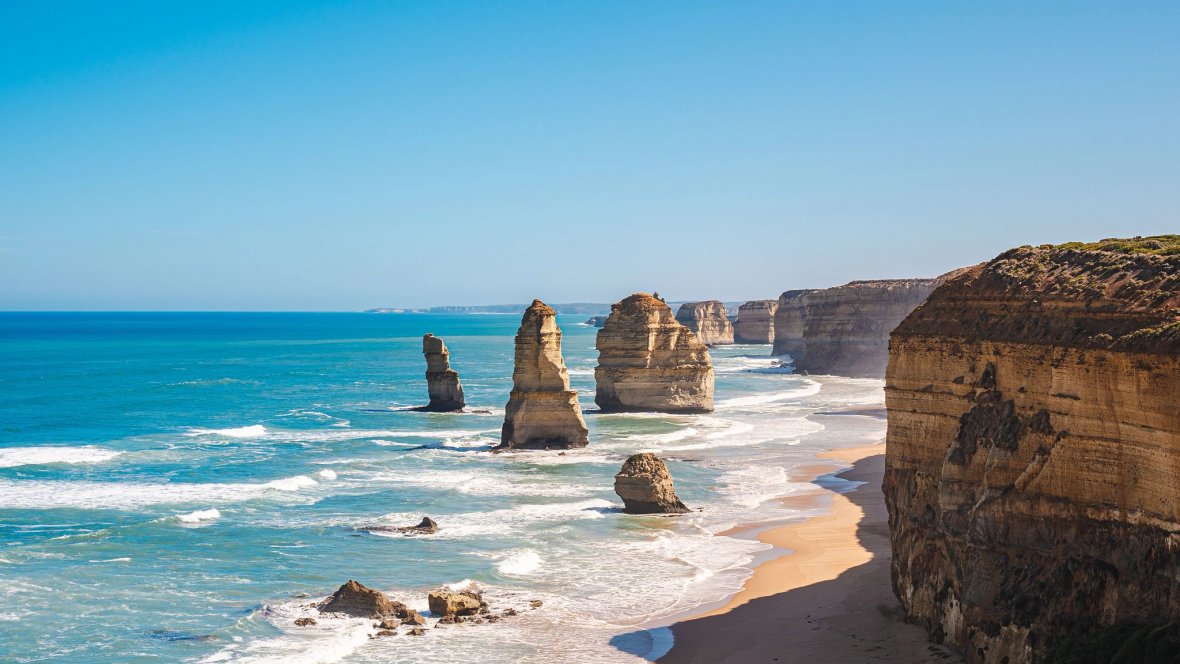


Join thousands of fellow campervan travellers
Sign up for our Britz newsletter to receive inspirational travel content and awesome deals, and we'll send you a copy of our Ultimate RV guide!
Thanks
Please confirm subscription in your email.
Why do people go to the Twelve Apostles?
Most people make the trip to see the Great Ocean Road Twelve Apostles for one simple reason: there is really nothing in Australia quite like them. Standing on the viewing platforms and seeing those limestone towers rising from the sea is pretty unforgettable.
But it’s not just about snapping a quick photo and heading off. You can wander down to the beach via the Gibson Steps to see the cliffs from below, check out the nearby Loch Ard Gorge (which has its own fascinating shipwreck history), or just take your time soaking up the views. Photographers, road-trippers, and even locals keep coming back because the light and the atmosphere are never quite the same twice. Want a bigger perspective? Jump on a helicopter tour of the Twelve Apostles and you’ll really appreciate just how rugged this coastline is. Whether you’re seeing the Twelve Apostles at sunrise, sunset, or something moody in between, these limestone pillars are a staple on any Great Ocean Road itinerary for a reason!
How long should I spend at the Twelve Apostles?
If you’re short on time, you can see the main viewing platforms in 30 minutes to an hour. That’s enough to stretch your legs, grab some photos, and tick it off the list.
But if you’ve got the time, we recommend that you give yourself 2–3 hours. That way, you can wander the Gibson Steps, take in Loch Ard Gorge, or even splash out on a Twelve Apostles helicopter tour. Sticking around longer also means you can catch the changing light. This is one of those places that looks completely different depending on the time of day.
Why is it called the Twelve Apostles in Australia?
Here’s the funny thing: there were never actually twelve (wild, right?). Originally named Sow and Pigs, the stacks were renamed in the 1920s, linking them to the biblical apostles. At the time, there were nine, and thanks to erosion, only eight remain standing today. If you’ve ever wondered how many Twelve Apostles are left, that’s your answer. The ocean’s still doing its thing, so the landscape here is constantly changing.
How to get to the Twelve Apostles
To get to the Twelve Apostles from Melbourne via campervan, you’ve got two choices:
-
The Great Ocean Road route (275 km / 4.5–5 hrs): This is the scenic option, winding along the coast through surf towns like Torquay, Lorne, and Apollo Bay. Most people make it a full-day drive so they can stop at beaches, waterfalls, and viewpoints along the way.
-
The inland route (230 km / 3.5–4 hrs): Faster and more direct, heading through Colac before dropping down to Port Campbell. Handy if you’re short on time or want a quicker way back to Melbourne.

Best time to visit the Twelve Apostles
Best time of year: You can visit year-round, but spring (September–November) and autumn (March–May) usually hit the sweet spot with mild temps and smaller crowds. Summer brings the biggest crowds (and the hottest days), while winter dials things back with chilly winds and dramatic seas, which can be moody but beautiful if you don’t mind layering up.
Best time of day: The real magic happens at sunrise and sunset. Sunrise means soft light and fewer people around. Sunset is busier, but the way the stacks glow in golden light is pretty special, so it can be worth showing up a little while before sunset to secure a spot to snap a few photos.
Weather at the Twelve Apostles
The coast near the Twelve Apostles in Port Campbell National Park can be a bit unpredictable. Summers are mild (15–25 °C), winters are cooler (7–15 °C) and windy, and conditions can change quickly. Sunshine, mist, and strong gusts can all roll in on the same day, so it’s best to bring layers and be prepared for a quick shift in weather.
Best place to park your campervan at the Twelve Apostles
The main Twelve Apostles Visitor Centre car park is where you’ll want to pull in and park your campervan. It’s big enough for campervans and caravans, and it connects to the viewing platforms via an underpass walkway. Facilities include toilets, a kiosk, and plenty of information boards. Just note there’s no overnight parking here, so plan to stay in nearby Port Campbell if you’re sticking around.
Road trips that pass through
- https://www.britz.com/au/en/get-inspired/driving-routes-australia/great-ocean-road
-
https://www.britz.com/au/en/get-inspired/articles-tips/explore-victoria-by-campervan
